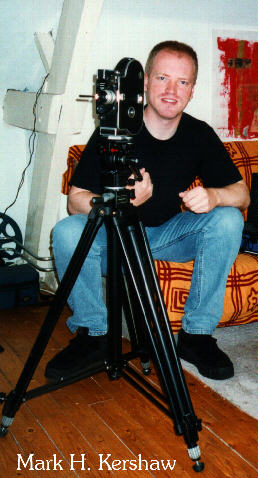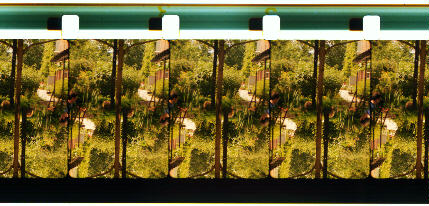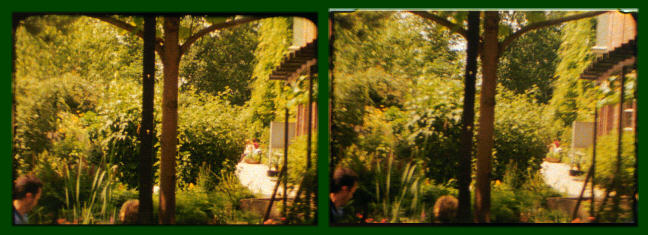
My name is Mark Kershaw and I became a member of the ISU earlier this year. I am a 25 year old English man living in Amsterdam, The Netherlands; I studied Three Dimensional Design at the Manchester Metropolitan University where I wrote my final year thesis on 3-D Films in entertainment titled "RAISE YOUR GLASSES PLEASE". It looked at the popularity of 3-D films and the institutes where they work best: mainstream cinema, theme-park attractions, and how 3-D films can educate as well as entertain.
I started to become interested in 3-D imaging at an early age during the 1980's 3-D cinema boom. I went to see Jaws 3-D amongst many others at that time, and was so impressed that from that point on my long term ambition was to make my own 3-D film. In November 1994 after graduating from college I moved to Amsterdam and after two years of settling down I started to begin my 3-D experiments. I chose to use the 16mm format because not only is it affordable, but the quality is good, it is also a professional technique recognized in the film world. I have never had any kind of film training before, apart from studying film genre at University, but once I had mastered the technical side of using the camera; lighting and film developing I decided to just go for it.
The 16mm camera I use is a 1959 Bolex H16 Reflex; I use a custom-made beam splitting device mounted onto the camera using adjustable brackets. The Bolex company made a stereo device for this camera in the early 1950's, it gave a side by side upright format with no anamorphic squeeze, the effects were apparently fantastic according to friends who used it at the time, and it was one of the first 3-D movie systems on offer to the general public.
Spondon Film Services, a British company who were responsible for the anaglyphic movie attachment for Super-8, 16mm and video cameras, designed and made my beam splitting device which is apparently based on the same design as the ELMO stereo movie unit. The device is used with a prime lens of normal focal length (25mm) which is set onto a locating ring at the back of the unit. The 16mm frame is split in half, unlike the original Bolex system where the images are side by side (portrait) this system rotates the left and right image 90 degrees so you get more width on each frame rather than height. The result is a landscape format, the advantage being that it is a more accepted film format, and the other advantage for me as a cinematographer is that it is more comfortable to work with. The separation between the stereo pair can be increased by the use of a sliding plate on the front of the box, this will exaggerate the landscape format if so desired. There is a convergence lever at the back of the box, which helps you align each shot.
The right hand picture is moved to align itself with the left frame; once locked in position the camera is then ready to shoot. The same Beam splitting box is used for projection. I project the stereo pair back through the box (at this point polarizing filters are added of course!) the images are projected back the right way up and the convergence lever superimposes one picture over another.
I have only been filming with this system for a short time and a lot of my work is very experimental. My first film was made in the Botanical gardens here in Amsterdam from which I have included a snippet for you to free-view. This a was good subject to begin with because of the ready made garden designs with beauty, depth and natural movement of water birds and the wind in the trees. In the winter I will be experimenting with indoor work, designing and making my own sets and experimenting with high-speed films. One particular shot that I am currently working on as of writing this article is the Dutch flag set on the beach at a place called Ijmuiden, approximately one hour from Amsterdam. I will film this at 32 frames per second so when it is played back at 24 frames per second a nice slow motion effect will be achieved picking out every effect that the wind has on the flag. I will place the flag pole in the plane of the stereo window so the forward effect of the flag itself will be comfortable and clear to watch. This I will submit next issue for you to free view along with a photo of the beam splitting device mounted on my camera.
One long-term project of mine is to create a series of films titled "STEREO HOLLAND". This will be a 3-D documentary film promoting the Netherlands, its countryside, traditions, people and culture. The final cut will be a segmented film around 30 minutes with a musical soundtrack. I would like to incorporate the flag at Ijmuiden in the opening scene. I now not only have a passion for stereo imaging but also the 16mm format. And there is nothing like recreating the original cinema environment. Especially in 3-D.
Stereo views on this web page are set up for cross-eyed viewing.



.